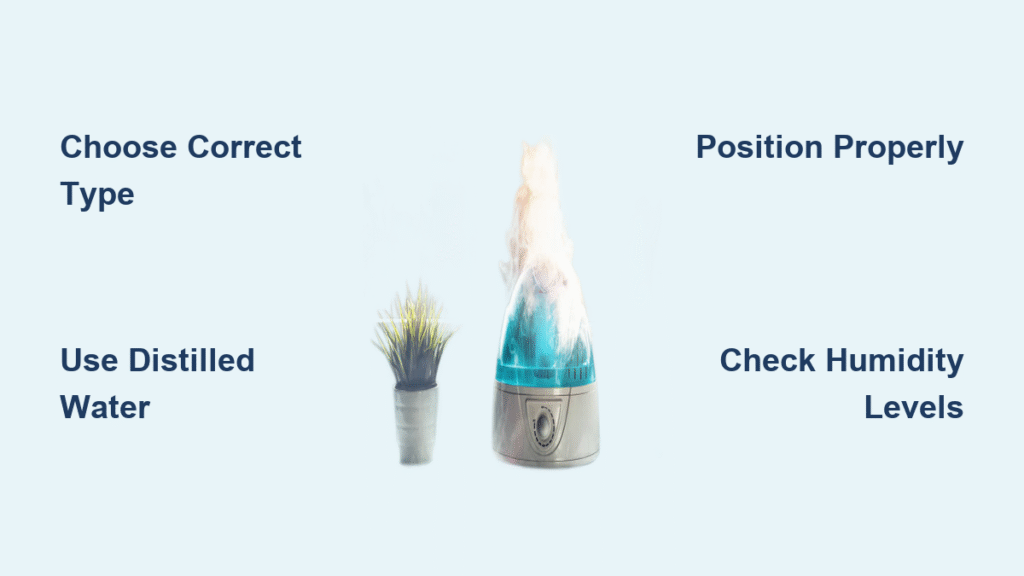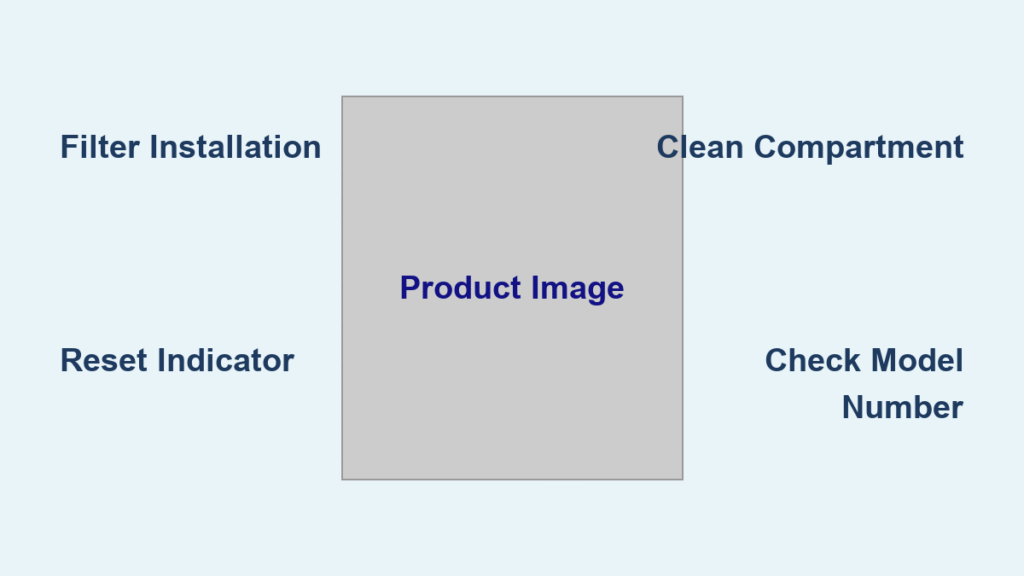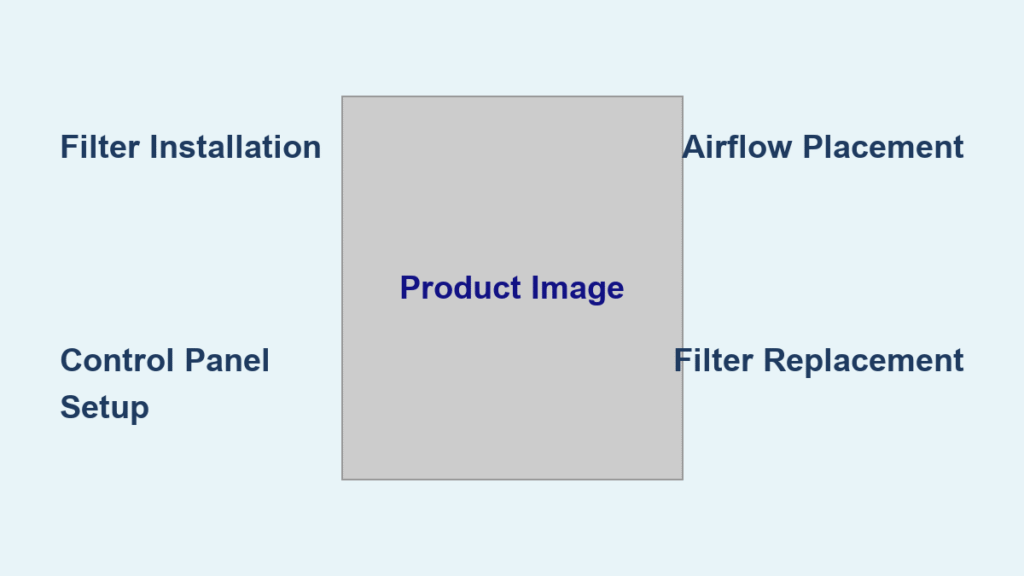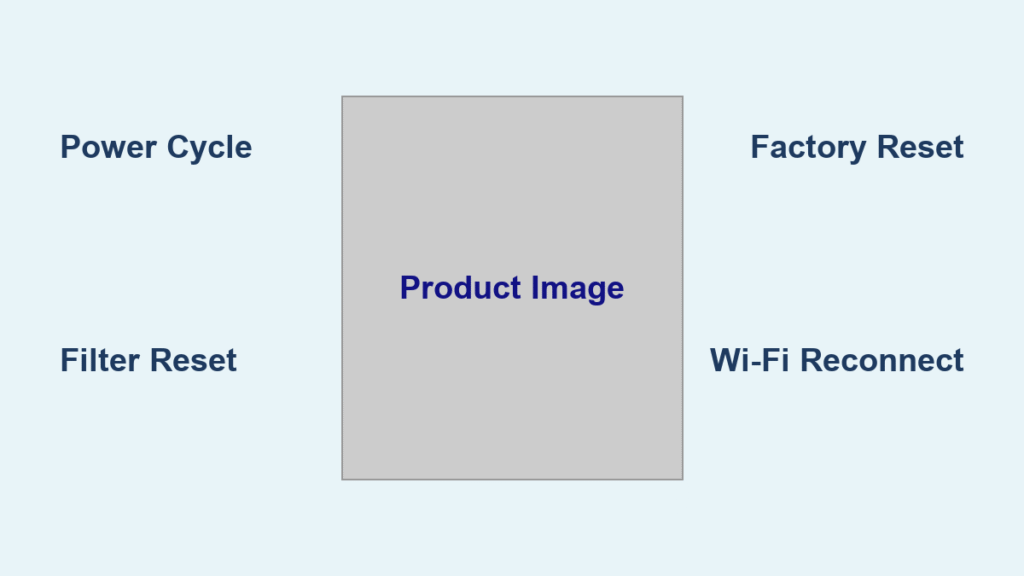That persistent scratchy throat and morning static shocks aren’t just winter nuisances—they’re your body’s warning that indoor humidity has dropped below 30%. When heating systems strip moisture from winter air, levels often plunge to 20% or lower, inviting respiratory irritation, cracked wood furniture, and even mold growth from overcompensation. Proper how to set up a humidifier knowledge transforms this essential appliance from a potential hazard into your home’s comfort guardian. Skip these critical steps, and you risk spreading bacteria or triggering condensation damage. This guide delivers field-tested setup protocols directly from HVAC technicians and EPA safety standards—no fluff, just actionable steps to achieve 40%–50% ideal humidity safely.
Select Your Humidifier Type Strategically
Ultrasonic cool mist units dominate bedrooms where silent operation matters most. These models use high-frequency vibrations to create mist without fans, eliminating disruptive noise while covering medium-sized rooms. Evaporative humidifiers work best for large living areas thanks to their wick-filter systems that naturally inhibit bacterial spread—Consumer Reports confirms they’re the safest choice for allergy sufferers.
Critical selection checklist:
– Room size match: A 300 sq ft space needs ≥2-gallon tank capacity
– Safety priority: Always choose cool mist for nurseries (warm mist units reach boiling temperatures)
– Noise sensitivity: Ultrasonic = near-silent, evaporative = low fan hum
– Maintenance tolerance: Warm mist requires weekly descaling; evaporative needs monthly filter swaps
Pro tip: Dual-mist models like the Honeywell HCM350W let you switch between cool/warm settings seasonally—ideal for homes needing year-round flexibility without multiple units.
Measure Humidity Before Powering On
Never skip the hygrometer check—most homes plummet to 20%–25% humidity during winter heating cycles, far below the 30%–50% health threshold. Place this $10 device 3 feet off the ground away from windows for accurate readings before setup.
Seasonal humidity targets:
– Winter: Maintain 40%–50% to offset furnace dryness
– Summer: Drop to 30%–40% when AC runs
– Danger zone: Exceeding 50% triggers mold growth within 48 hours
Immediate correction signs:
– Window condensation = humidity >55% (reduce runtime immediately)
– Frequent nosebleeds = humidity <25% (increase output)
– Peeling paint on walls = chronic over-humidification
Position for Optimal Airflow Distribution

Elevate your unit 3–4 feet high on a dresser or shelf—floor placement causes moisture pooling that warps hardwood floors. This height ensures mist integrates with natural air currents instead of settling on surfaces.
Placement boundaries to enforce:
– 12+ inches from walls prevents hidden mold colonies
– Minimum 3 feet from beds avoids direct mist exposure during sleep
– 5+ feet from electronics protects TVs/computers from moisture damage
– Never near radiators (rapid evaporation creates humidity spikes)
Room-specific positioning:
– Nurseries: Cool mist only on dresser opposite crib (never within child’s reach)
– Home offices: Shelf beside desk with mist directed away from paperwork
– Living rooms: Corner table 6 feet from seating areas for even dispersion
Complete Pre-Use Assembly Safely

Start with the manual—even experienced users miss model-specific steps like aligning mist nozzles or priming filters. Most portable units require just three critical assembly actions: attaching wheels, inserting filters, and connecting mist outlets.
Non-negotiable pre-operation checklist:
1. Wash all components with dish soap to remove factory residues
2. Install filters before first water fill (evaporative models only)
3. Inspect power cord for fraying—discard if damaged
4. Test controls dry (no water) to verify functionality
Critical safety alert: Warm mist units must use room-temperature water only. Adding cold water to a hot element causes violent steam bursts capable of severe burns.
Fill Only With Distilled Water

Tap water destroys humidifiers through mineral deposits that create respiratory-irritating “white dust” and clog internal mechanisms. Distilled water eliminates 99% of maintenance issues while preventing bacterial growth in reservoirs.
Water protocol essentials:
– Fill to the MAX line—overfilling causes leaks during operation
– Empty completely daily (bacteria double every 20 minutes in standing water)
– Store spare distilled gallons near the unit for quick refills
– Never use water softener output (salt residues corrode components)
Filter note: Evaporative models require new filters during initial fill—reusing old filters spreads trapped mold spores.
Program Runtime Settings Precisely
Begin with 8-hour cycles—jumping straight to 24/7 operation risks over-humidification. Most units achieve target humidity faster than users expect due to residual moisture in walls and furniture.
Optimal setup sequence:
1. Set humidistat to 40% (ideal starting point for winter)
2. Activate auto-shutoff (prevents overflow during sleep)
3. Use medium fan speed for balanced noise/output
4. Enable 12-hour timer for daytime operation
Seasonal adjustments:
– Winter: Add 2 hours runtime for every 10°F temperature drop
– Summer: Reduce target humidity to 35% when AC runs
– Rainy days: Disable entirely—outdoor humidity >60% makes units counterproductive
Execute Daily Maintenance Routines
The 90-second daily ritual (empty-rinse-refill) prevents 90% of humidifier failures. Skipping this allows Legionella bacteria to colonize reservoirs within 48 hours—EPA studies link this to “humidifier lung” respiratory illness.
Non-negotiable daily steps:
1. Unplug and power down (never handle wet electrical components)
2. Drain ALL water—tilt unit to remove hidden reservoir pockets
3. Wipe interior with microfiber cloth (no soap residue)
4. Refill with fresh distilled water
Weekly deep clean: Soak tank and base in 1:1 white vinegar/water solution for 20 minutes, then scrub mineral deposits with soft brush. Never use bleach—EPA warns it creates toxic fumes when mixed with residual vinegar.
Eliminate Mold at First Warning Signs
Visible wall dampness = emergency shutdown. Mold spores become airborne within 72 hours of moisture exposure, worsening asthma symptoms. Immediate action prevents costly remediation.
Prevention environment controls:
– Keep bedroom doors open 20 minutes hourly to circulate air
– Run bathroom exhaust fans during/after showers (reduces moisture transfer)
– Wipe window condensation daily with dry microfiber cloth
– Place moisture absorbers (like DampRid) in adjacent closets
Red alert indicators: Musty odors, black specks near vents, or sudden allergy flare-ups require immediate unit shutdown and professional cleaning.
Fix Common Setup Failures Immediately
White dust coating furniture? Switch to distilled water today—this mineral residue damages electronics and irritates lungs. Existing deposits require vacuuming with HEPA filter followed by damp microfiber wiping.
Humidity still too low? Verify these 4 culprits:
– Room size mismatch (unit undersized for square footage)
– Mist outlet blocked by wall or curtain
– Saturated filter (needs replacement in evaporative models)
– Placement near heat source (radiator disrupts dispersion)
Excess moisture solutions: Reduce runtime by 2-hour increments, install exhaust fan, or move unit away from exterior walls.
Adapt Setup for Seasonal Shifts

Winter demands aggressive monitoring—furnace output can drop humidity 5% per hour. Increase runtime gradually (max +2 hours daily) while checking hygrometer readings twice daily. Jumping to 24-hour operation risks window condensation within hours.
Summer adjustments:
– Lower target humidity to 35% when AC runs
– Use only during dry spells (deactivate when outdoor humidity >50%)
– Shorten cycles to 6 hours maximum
End-of-season shutdown: Deep clean all components, dry completely for 72 hours, store in breathable cotton bag (never plastic—it traps moisture).
Enforce Family Safety Protocols
Warm mist units belong in locked offices—their boiling water reservoirs cause third-degree burns in 0.5 seconds. The CPSC reports 300+ annual emergency room visits from humidifier burns, mostly involving children under 5.
Child-proofing essentials:
– Use only cool mist ultrasonic models in family areas
– Secure with furniture straps to prevent tipping (15+ lbs required)
– Route cords behind furniture to avoid tugging accidents
– Weekly stability checks for wobbly surfaces
Senior-friendly modifications: Add glow-in-the-dark markers to water lines, install lever-style controls, and place unit within wheelchair reach but away from foot traffic paths.
Final tip: Your humidifier works best as part of an integrated air quality system. Pair it with MERV 11 furnace filters changed quarterly and open windows for 10 minutes daily when outdoor humidity permits. This trio creates hospital-grade air purity while preventing the “closed-room syndrome” that makes standalone humidifiers ineffective. Monitor with a $15 hygrometer—when your unit maintains 40%–50% humidity without window condensation, you’ve achieved the sweet spot for respiratory health and home preservation.

